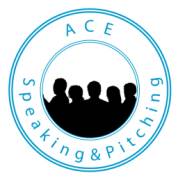1.First, set the timer
One of the most crucial components of your pitch is time – short and sweet, present your pitch to friends, family, and coworkers ahead of time and ask them to time it for you as you practice. When planning your pitch think about pacing it at 120 words per minute, which makes your 30 second pitch about 60 words. For most of you, 60 words will never cover everything you do. It is important to make a conscious decision about what to leave out or you could find the most important things are glossed over or left out completely. If you decide what is most important, clarifying what to leave out and what must be left in, it is much easier to meet time allocations.
2.Speak naturally
If you sound overly scripted, the interaction will appear forced, so try to present your elevator pitch in a conversational way. It may be beneficial to write your pitch in shorter bullet points. When you practice it, you’ll learn to remember concepts rather than memorise a full script, which will help your presentation sound more natural. It’s fine if you want to memorise your pitch – if that’s the case, try practicing it until it feels natural to repeat it out loud.
3.Slow down the pace and pause
The listener may overlook essential information if you speak too quickly. Give your elevator pitch at a slower, more deliberate pace to give the audience time to consider what you’re saying. It could be a natural inclination for you to speak rapidly, or it could happen when you’re nervous. Regardless, make a conscious effort to slow down and practice your pitch with this method in mind.
4.Make it simple to comprehend
Use simple language that everyone can understand. For example, if you include a lot of technical jargon and industry-specific phrases that only someone with your skill level would understand, you risk alienating anyone else who doesn’t have your level of knowledge. It may be harder for people to ask you follow-up questions, and they may be less eager to continue the conversation with you as a result.
5.Confidence (but not cocky) is key
Even the strongest elevator pitch might be rendered ineffective if you lack confidence in your delivery. When meeting someone and giving your pitch, keep your body language natural, shoulders back, and matching facial impressions.
By taking one step at a time, you can create a pitch that can be used in any professional situation with a focus on your audience.

